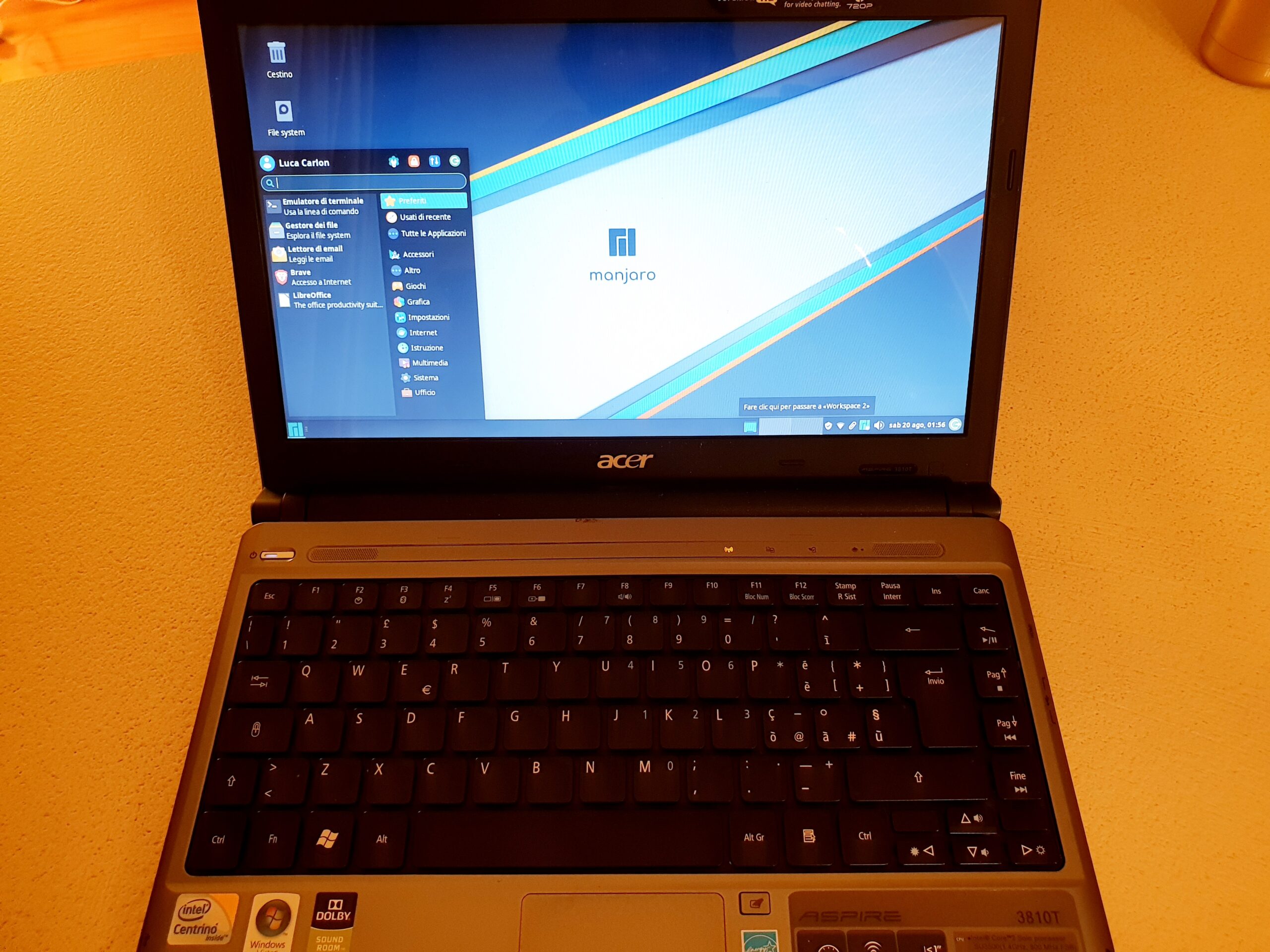Linux on the Acer Aspire 3810T

This post is for people trying to resuscitate this little machine, the Acer Aspire 3810T. I sometimes install Linux on old machines that people consider outdated and leave for dead, but this time I had some troubles with this one. The problem was that, after installing the system, I got the usual message:
no bootable device foundIt took a few hours to find out what the problem was, so this is a quick post for those having the same problem.
Symptoms
USB live systems could all be started properly. I also tried a persistent USB Manjaro installation, and everything was running perfectly fine. Installing the system with the regular installer though, always resulted in the error “no bootable device found”. I tried both Xubuntu and Manjaro XFCE: while Manjaro XFCE completed the installation without errors, Xubuntu reported a generic error even during the installation. In both cases, after the reboot, no installation could be run.
What I could determine is that USB pendrives were booted in EFI mode. Unfortunately no option in the firmware settings allowed me to choose explicitly BIOS or EFI. Secure boot was not even mentioned in the firmware settings.
Solution
TLDR: while the BIOS settings did not include an option to boot the USB key in BIOS mode, opening the boot selection menu at boot shows two entries for the USB bootable pendrive. One of the two is BIOS boot. This will install a bootable system.
Explanation
I’m no expert of desktop systems, but my understanding is that while this Acer machine can boot the USB pendrives both in EFI and BIOS (or legacy) mode, it can only boot the internal HDD in BIOS mode. This may be explained by the fact that this machine was sold with Windows Vista installed, which did not probably support EFI at all.
It seems that when Xubuntu and Manjaro are booted in one mode (either BIOS or EFI), they automatically assume the machine can boot in that mode, and install the system with the same setup. This behavior may be the problem here: booting in EFI mode results in a EFI installation on the HDD, which is not supported at all.
Result
After understanding the problem, fixing required to find a way to boot in BIOS mode (through the boot selection) and reinstalling the distro. At that point the Manjaro installer properly reported that BIOS boot was detected. The rest was as usual. Linux worked fine on the machine.
Hope this can spare you some time. Bye! 😉
Yes. You pointed to a couple of facts that I did not know: old PCs only support booting disks in BIOS mode except for USB which boots and prefers EFI. And since the USB boots in EFI the installer thinks that booting the hard drive in EFI will also work so it installs it that way.
I wish the installers would somehow confirm this. I think your Rufus/BalenaEtcher can only install for BIOS but that is too early in the process.
Manjaro installer actually shows how it booted (EFI/BIOS). Unfortunately, it does not allow to select which mode it should install.